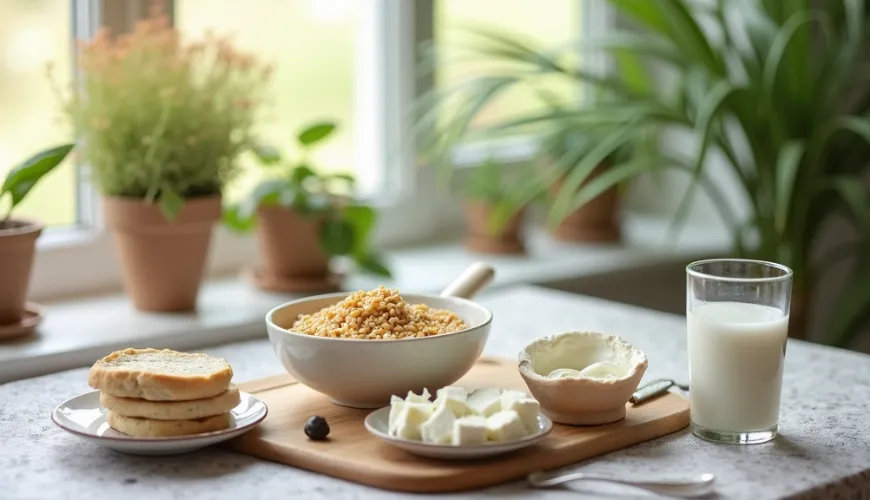
Discover How to Enjoy a Residue-Free Diet Without Boredom

What to Eat on a Low-Residue Diet and How to Make It Enjoyable
Has your doctor recommended a low-residue diet, and are you now a little lost on what exactly that means? You're not alone. Although this eating plan might initially seem strict or complicated, with some understanding and planning, it can be managed smoothly—and even deliciously. A low-residue diet is commonly recommended for both acute and chronic digestive tract conditions, such as Crohn's disease, ulcerative colitis, diverticulitis, or after certain surgeries. Its goal is to reduce the amount of indigestible residue in the diet, thus minimizing intestinal load.
But what exactly does "low-residue" mean? Simply put, it involves a diet low in fiber and indigestible particles that could irritate the digestive tract. In practice, this means avoiding certain foods—such as whole grain products, legumes, fruit and vegetable skins, or seeds. However, with the right ingredient choices, there's no need to fear that the diet will be bland or nutritionally poor.
What to Eat on a Low-Residue Diet
The list of allowed foods may vary depending on the specific diagnosis and stage of the disease, but some rules generally apply. The key is gentleness, easy digestibility, and the absence of irritating components. Suitable foods include:
- white bread (rolls, buns without seeds, wheat toast),
- cooked rice, white bread, peeled potatoes,
- lean meat (chicken, turkey, sometimes veal), preferably boiled or steamed,
- boneless fish, preferably boiled or baked without skin,
- broths without vegetables and low in fat,
- hard-boiled eggs or scrambled eggs made with water,
- finely grated hard cheese, low-fat cottage cheese,
- bananas, peeled apples (cooked, steamed, or baked),
- plain yogurt, kefir, milk in small amounts.
As for vegetables, they must always be cooked and peeled, and seeds removed. Suitable options include cooked carrots, pumpkin, zucchini (only the flesh), or peeled potatoes. From fruits, primarily bananas are recommended, or stewed pears or unsweetened canned apples.
When considering what to avoid in your diet, it's important to understand that it's not just about a list of "forbidden" foods but rather a sensible restriction of anything that might unnecessarily burden digestion. This typically includes items high in fiber, irritating to the digestive tract, or leading to excessive bloating. We're talking about whole grain bakery products with various seeds—even though they are healthy, they are not ideal when trying to be gentle on the stomach.
The same problem can be caused by raw vegetables or fruits, especially if they have skins or small seeds—they can be quite challenging to digest. Then there are legumes, nuts, and seeds, which can be a bit of a "heavy hitter" even for an otherwise trouble-free stomach. Fried and fatty foods are also unsuitable—they are generally hard to digest. Cured meats and canned meat products fall into a similar category because they contain various additives and fats that do not benefit the digestive system at all.
When you add spicy, pungent foods and beverages like caffeinated coffee, alcohol, or sugary fizzy drinks, you get a complete list of what can irritate the stomach and complicate digestion. In short, it's not just about what we eat, but also when, in what quantity, and in relation to which health condition—and sometimes, less is more.
Can You Drink Coffee on a Low-Residue Diet?
Many people wonder if coffee is allowed on a low-residue diet. While coffee doesn't contain fiber, it can still be problematic because it stimulates the secretion of stomach acids, which can be unsuitable for an irritated digestive tract. Therefore, regular black coffee is usually inappropriate, especially in the acute phase of the disease.
However, some experts allow small amounts of weak decaffeinated coffee, ideally with a bit of milk if the patient tolerates it well. An alternative can be grain coffee without caffeine, which is gentler on the digestive tract. It always depends on individual tolerance—and nothing replaces a consultation with a doctor or nutritionist.
Low-Residue Diet and Recipes
At first glance, a low-residue diet might seem boring and deprive a person of the joy of eating. In reality, there are plenty of simple recipes from common ingredients that taste great while meeting the diet's requirements. The key is learning to choose ingredients wisely and prepare them to be easily digestible.
For instance, steamed chicken with mashed potatoes is a tried-and-true classic. A gentle dinner option might also be rice pudding with stewed apple or pasta made from white flour with butter and a bit of mild cheese. For breakfast, a white roll with cottage cheese or cooked oatmeal with banana (from finely milled oats and without skin) is suitable.
As an example from real life, imagine Mrs. Alena, who transitioned to a low-residue diet after bowel surgery. Initially, she felt restricted, but gradually she found her rhythm: she had cooked semolina porridge with a teaspoon of honey for breakfast, steamed chicken with cooked carrots and potatoes for lunch, and white yogurt with mashed banana for dinner. The key was that she didn't focus on what she couldn't eat but discovered new possibilities of what she could eat.
How to Make the Diet Enjoyable and Not Go Crazy
When someone suddenly has to change their diet due to health issues, it can be stressful. The key to managing a low-residue diet is not only consistency but also openness to new habits. Many people find that this way of eating suits them even after their issues have subsided—at least in some aspects.
One trick to making the diet enjoyable is preparing meals at home with an emphasis on simplicity and flavor. Even low-residue meals can be fragrant and attractive—gentle herbs like marjoram, lovage, or a bit of butter for taste can help.
The psychological aspect is also significant. The feeling that we have control over our health by eating what benefits us can be empowering. Moreover—even though it sounds cliché—we are what we eat. The famous French gastronome Brillat-Savarin once said: "Tell me what you eat, and I will tell you what you are." And in the case of a low-residue diet, this is doubly true—we eat in a way that allows our digestive system to recover and function without pain again.
So if you are currently in a period where you need to follow a low-residue diet or are helping someone close to you manage it, don't be afraid to experiment within the allowed possibilities. Although the menu may be temporarily limited, with a bit of creativity, it can be transformed into a nutritious, tasty, and healthy diet that truly aids the body.

